No rest for the wicked. Photo report from the far reaches of Russia, where we were thanks to Roshydromet
But what is strange, what is most incomprehensible of all, is how authors can take such
plots, I confess, this is absolutely incomprehensible, that's for sure ...
No, no, I don't understand at all.
N.V. Gogol
By the will of fate, I became a participant in the grandiose project LANIT - the modernization of the meteorological network of Roshydromet. Almost anywhere in the civilized world, observers do not rush around the site to take instrument readings — everything that is possible is automated. In Russia, they relied on this, but thanks to the Rosgidromet modernization project, the meteorological network re-equipment happened. There was no such scale anywhere and never, but we implemented the project in just two years (2008–2009). And this, for a minute, the delivery of 1842 meteorological stations plus other coherent and energy cladding. It was also necessary to assemble the stations, assemble and pack them, deliver them to each of the 85 regional centers, and from there take them to the stations, install and configure them.
At the moment, the second stage of modernization is in full swing. Excavations in the archives of documents and gave me the idea of such a post.
')
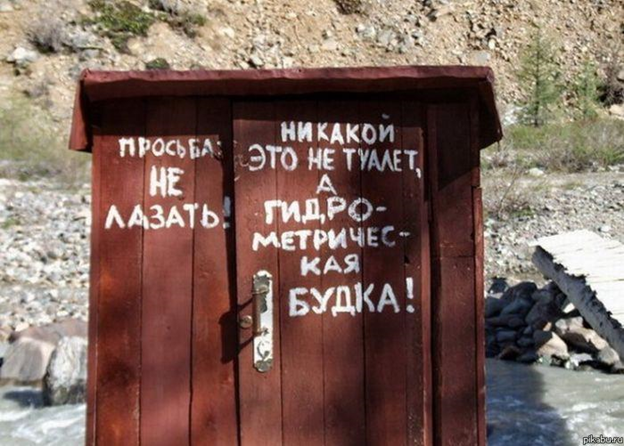
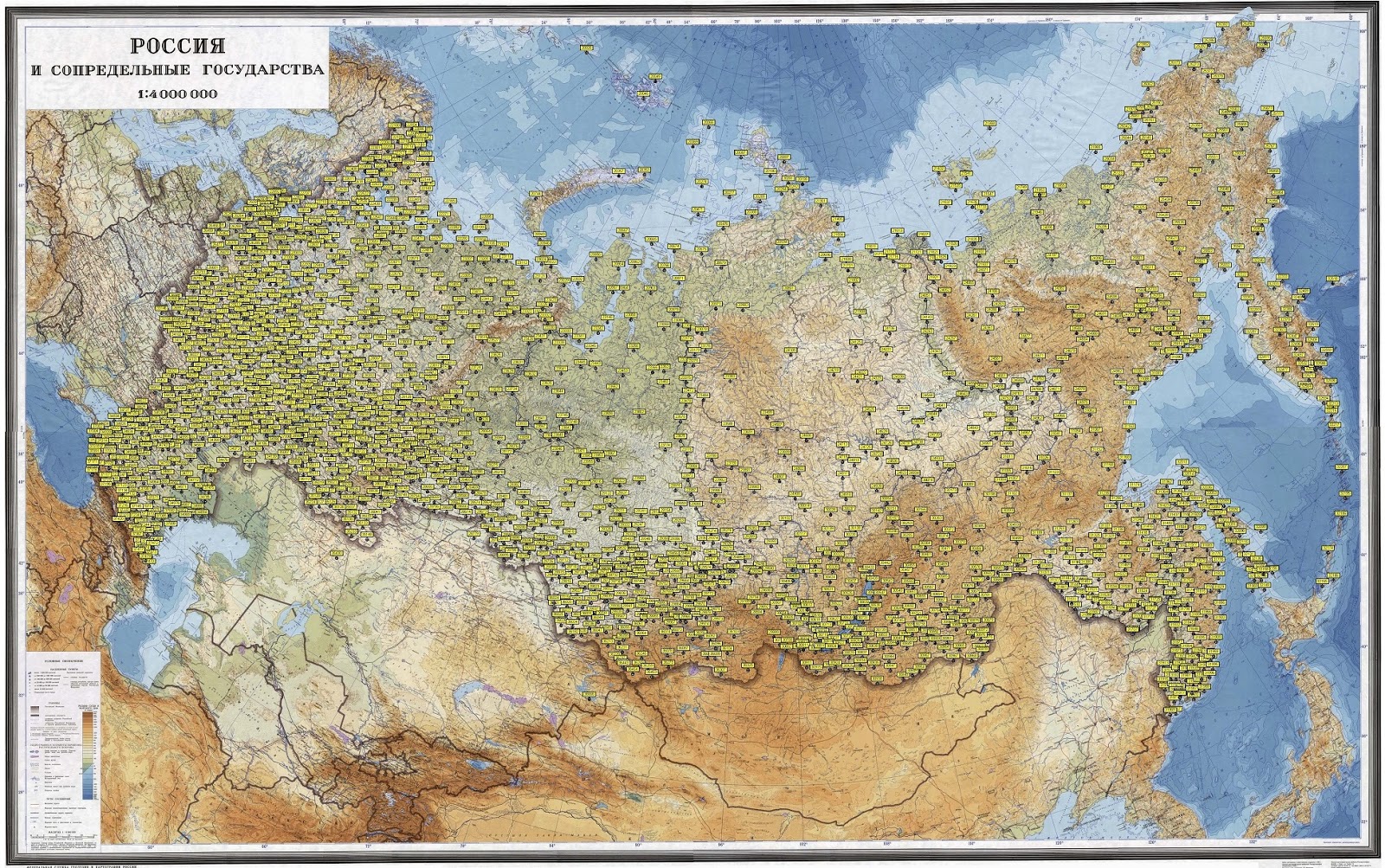 Tragedy on a scale of 1: 4,000,000. Geography of Roshydromet weather stations
Tragedy on a scale of 1: 4,000,000. Geography of Roshydromet weather stations
In general, the whole project of modernization of organizations and institutions of Roshydromet consisted of several contracts: on meteorology, hydrology, aerology, oceanology, etc. Then I will show photos that relate to the most remarkable of them.
The part of the project that we covered included the supply of equipment for more than 2,000 objects of the observation network and the installation of more than 500 sites.
To implement the project, LANIT became a manufacturer of weather stations. We decided that we would develop this production on our own on the basis of the Luch plant in Novosibirsk. Components were brought from all over the world, we also received Russian components (with them, by tradition, there were the most problems).
 Novosibirsk, Luch plant. Production of our equipment
Novosibirsk, Luch plant. Production of our equipment
The factory organized a whole assembly line, which employed 10-15 people. For this, we several times brought crowds of specialists on the organization of production from the company Vaisala, who shared their knowledge, not knowing fear and reproach.
Then the station passed through the packing shop. Also “Luch” made metal products - masts, boxes, racks, traverses, etc. They also assembled the stations, tested and packed them.
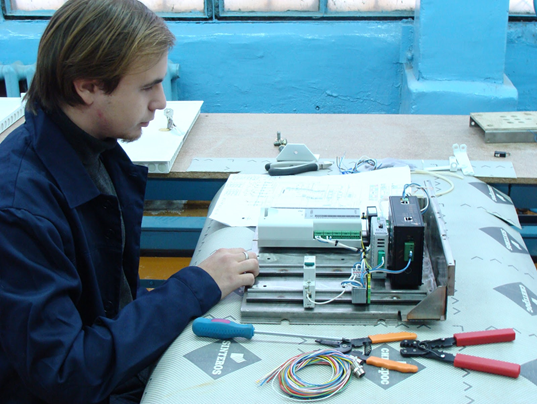 Installation of components on the station mounting frame
Installation of components on the station mounting frame
The plant took off a serious part of our concerns. If we did everything ourselves, we would still implement this project. We should also thank these wonderful people for getting rid of problems with the equipment and packaging equipment. There was almost no mistake. But then we heartily swallowed up with another warehouse in subsequent projects, for example, the task of sending equipment to a specific recipient with given serial numbers turned out to be practically unsolvable.
 A source
A source
Typical behavior of warehouse staff
In order to meet the budget, the installation was entered into the project. We visited 23 territorial offices (UGMS) of Roshydromet. Local experts from the departments were gathered there, technical technicians were taught how to install and maintain the stations, and methodologists were told how to work with the new equipment and software. The practice was fixed just chief-montage. Further, these trained engineers of the departments independently installed the complexes and trained observers at the meteorological stations.
We had up to 12 brigades under the installation supervision, each with 2 people.
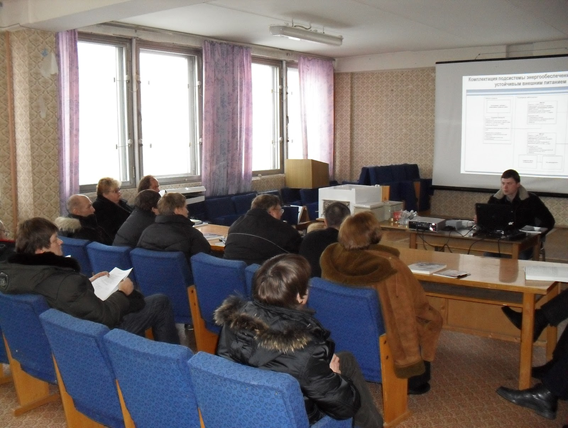 Kursk, training. There was supposed to be a joke about heating, but I couldn't think of it
Kursk, training. There was supposed to be a joke about heating, but I couldn't think of it
Previously, an observer who (and usually - who) receives several thousand rubles a month should go to the site 8 times a day in any weather, climb a ladder, get thermometers, record readings, etc. Now, at most Rosgidromet facilities, modern automated stations have replaced mercury barometers, hygrographs and other outdated meteorological tools.
Manual observations in the end have not gone away (a classic example is the definition of the shape of clouds), but at individual points not belonging to the main observation network, the stations are transferred to a fully automatic mode.
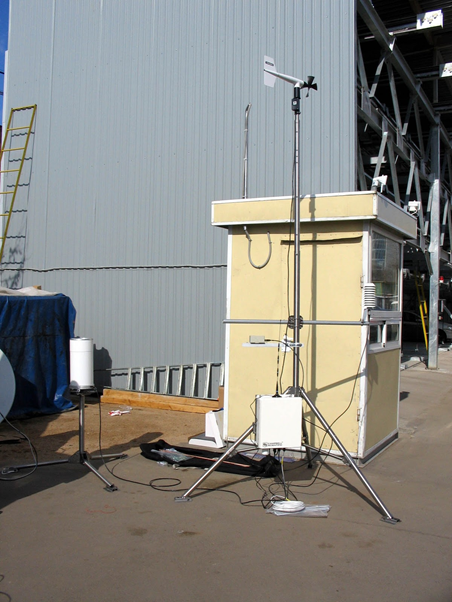 And this is a by-product - a mobile (collapsible) weather station.
And this is a by-product - a mobile (collapsible) weather station.
There is a favorite bike from Soviet times, which we were told in Hydromet. It describes well the relevance of our project.
Students studied at some meteorological high school and conceived to go south. Previously, everything was easier - they called to one of the southern weather stations:
- We are students, we will arrive soon. We will live here.
- Yes, please come.
They come - no one, only one little boy of 10-11 years old walks.
Students ask:
- Boy, where is everyone?
- And they went to the next village for the wedding.
It takes a couple of days, but no parents. Go to the boy:
“Boy, where are your parents?”
- So they left for two weeks.
- Well, but this is a weather station, every day you need to be on duty, in time to record everything and transmit.
- Oh, nothing. They all wrote two weeks in advance.
 Here it is, our hero. Logger
Here it is, our hero. Logger
The most unique thing in our weather station is the software component. I'm talking about scripts, or configuration. Logger QML201 is very sophisticated. So we did all sorts of unimaginable things that hardly anyone has since repeated. Example: There is a key code for the transmission of meteorological information. It's about KN-01 , which was invented in shaggy years and was confined exclusively to the telegraph. The main data processing lay on the observer, and in our case it was necessary to considerably load the logger, instead of sending the primary data to the center and processing it already there.
Despite our violent protests, we had to implement this miracle in the logger. Yes, and with the distribution of data from the observer. Less than 8 years, how we managed to change something .
In addition to the weather stations, the project continued with 18 actinometric stations that measure all types of solar radiation.
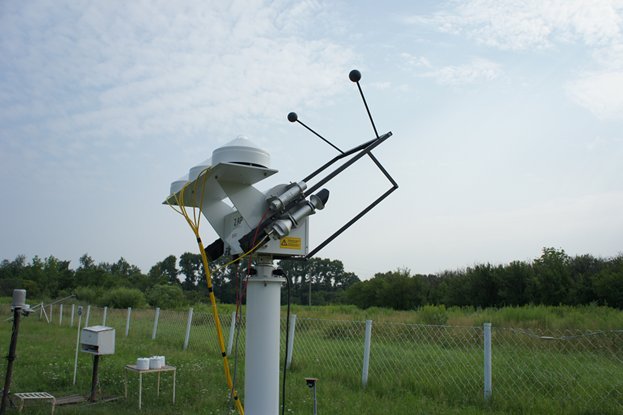 Actinometric station in Khabarovsk
Actinometric station in Khabarovsk
And sea surface stations:
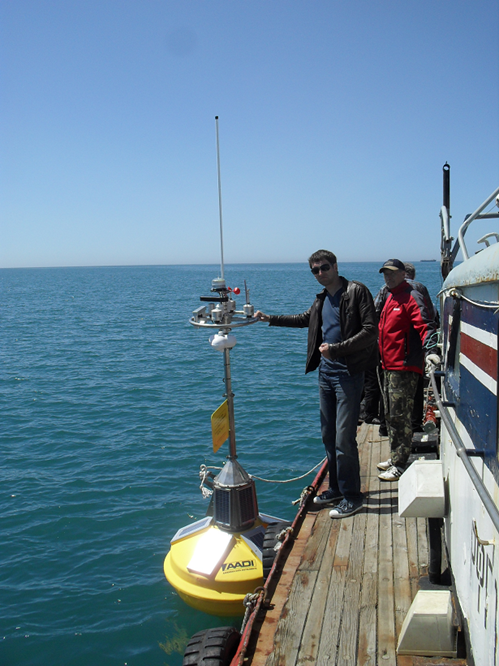 Sochi. Sea buoy measures a ton of weather and underwater parameters.
Sochi. Sea buoy measures a ton of weather and underwater parameters.
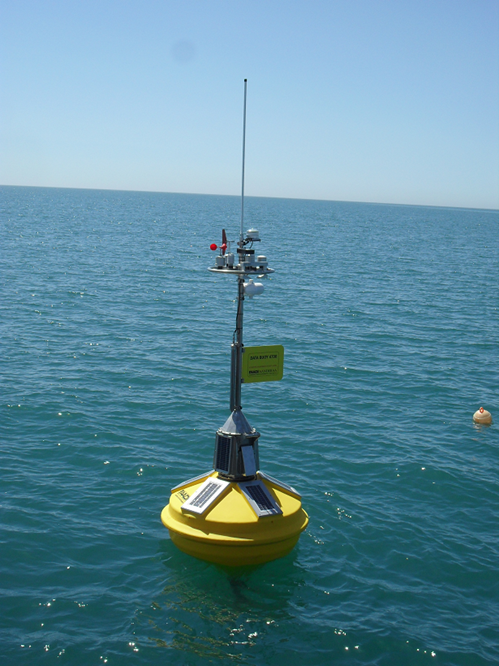 But without extras
But without extras
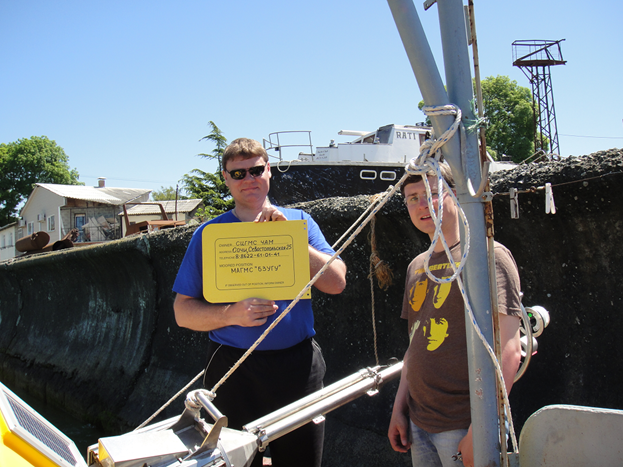 ID tag
ID tag
This sign, by the way, saved us all a lot of money. A couple of months after the installation, the buoy tore off the anchor with a storm. He went, I suppose, to Istanbul, but was intercepted by valiant border guards and delivered to the owners.
And underwater:
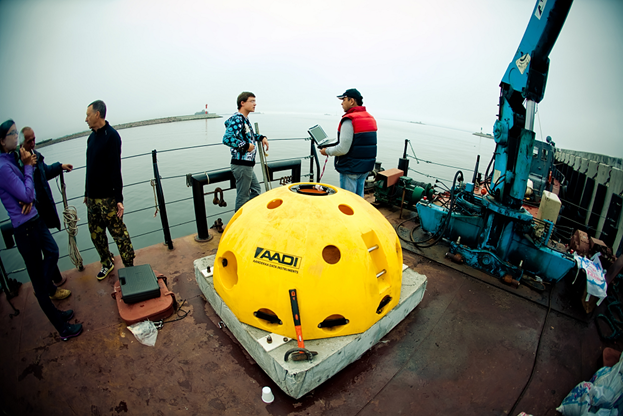 St. Petersburg, installation of bottom profilograph
St. Petersburg, installation of bottom profilograph
 At the lighthouse Tolbukhin
At the lighthouse Tolbukhin
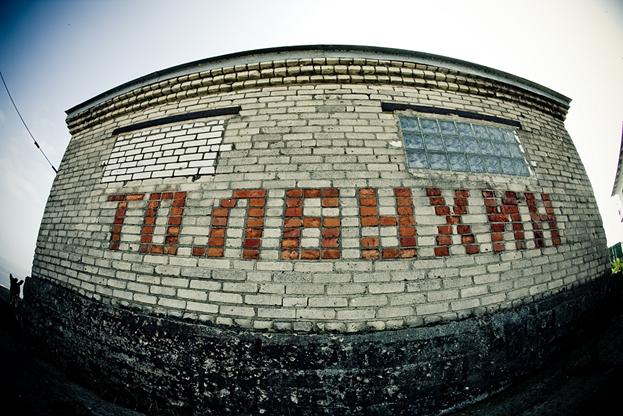 Proof
Proof
Of course, the project manager cannot reach all the stations - there is simply no time for this. But once I waved my hands on everything and went to Karachay-Cherkessia myself, to the Klukhorsky Pass. It is next to Dombai. This area has the status of inaccessible territory. By definition, roughly, a “hard-to-reach station” is where you can’t get by car, don’t ride a horse. And it is quite possible to get to Klukhor pass and live the life of the locals. The only thing that is not there is communication.
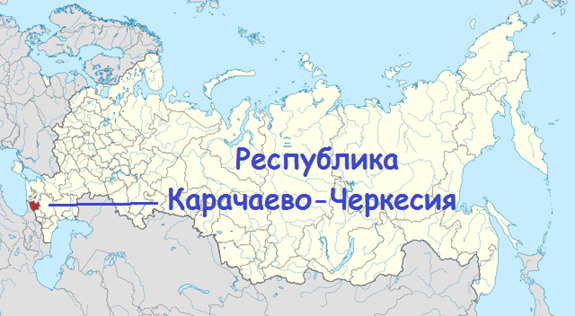 A source
A source
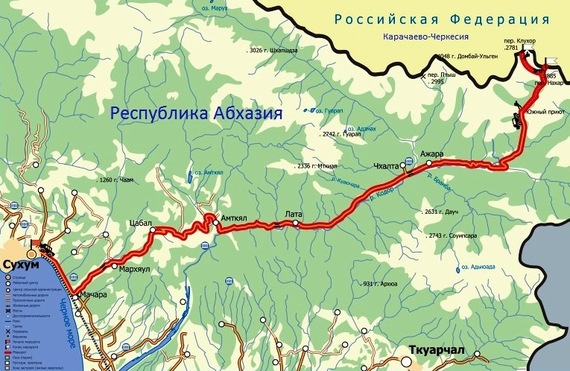 A source
A source
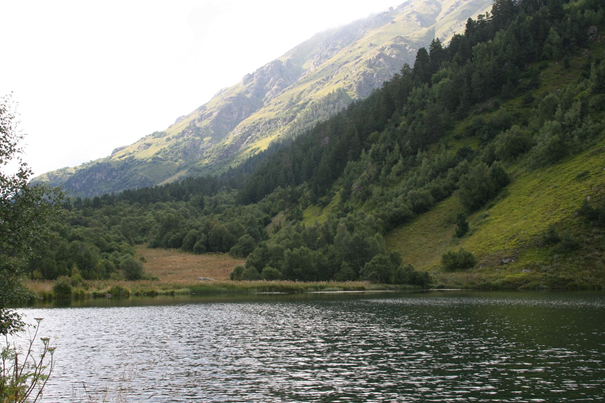
Klukhor pass - the highest mountain section of the Military-Sukhum road (height of 2781 m), leading from the great Caucasus mountains to the Black Sea coast. Here is the border of Russia with Abkhazia. It was in this place during the Second World War that the fiercest battles with the German occupiers for the Klukhor Pass took place.
 Klukhor pass and wind sensor. Made for each other
Klukhor pass and wind sensor. Made for each other
 We worked at Klukhor Pass in August, the weather was fine. More precisely, it shows who worked and who didn't.
We worked at Klukhor Pass in August, the weather was fine. More precisely, it shows who worked and who didn't.
 Those same manual (personal) measurement tools
Those same manual (personal) measurement tools
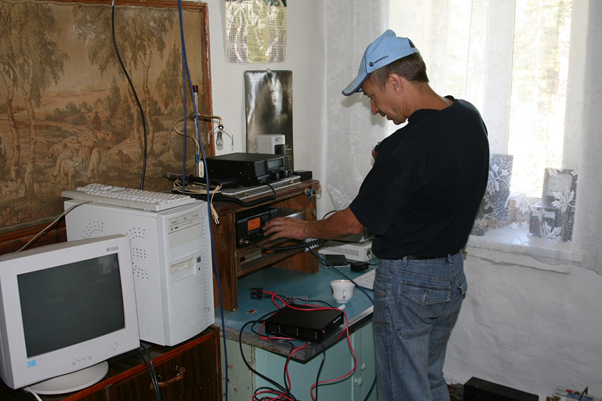 Tuning HF radio stations
Tuning HF radio stations
After Klukhor decided to stay at the installation of an automatic station at the Zelenchukskaya Observatory.

Or rather, in the special astrophysical observatory of the Research Institute of the Russian Academy of Sciences in the North Caucasus.
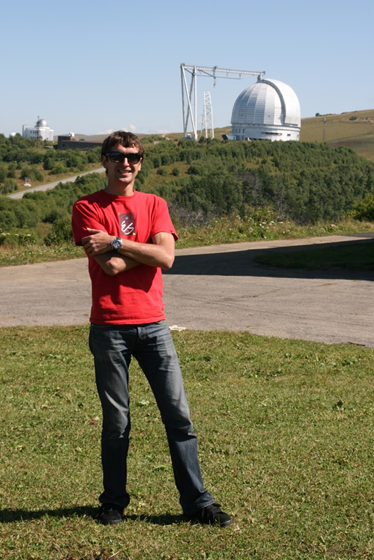
Currently, it is the largest Russian astronomical center for ground-based observations of the universe. In the photo - the optical reflector BTA and me. Try not to confuse.
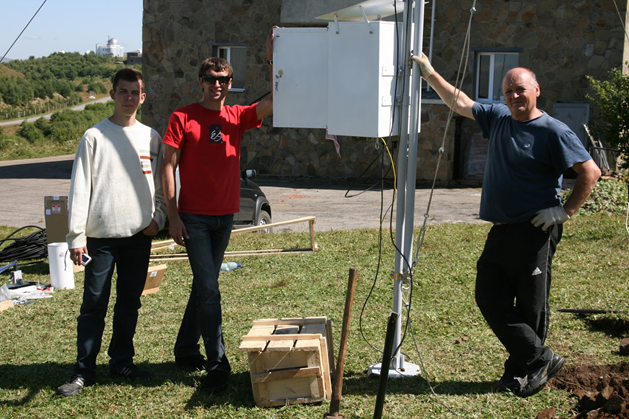 Zelenchuk Observatory. Weather station set right at the hotel. Why go far?
Zelenchuk Observatory. Weather station set right at the hotel. Why go far?
And then, as in the joke about Pinocchio and a broken leg, it went and went ...
This contract included the supply and installation of 60 upper-air locators throughout the country. Below - about one of the locations.
Our project has touched places where you really can’t reach anything except a helicopter.
So, the LANIT team went to the Boiler Island in Yakutia. It is located between the East Siberian Sea and the Laptev Sea and is the largest in the archipelago of the Novosibirsk Islands.
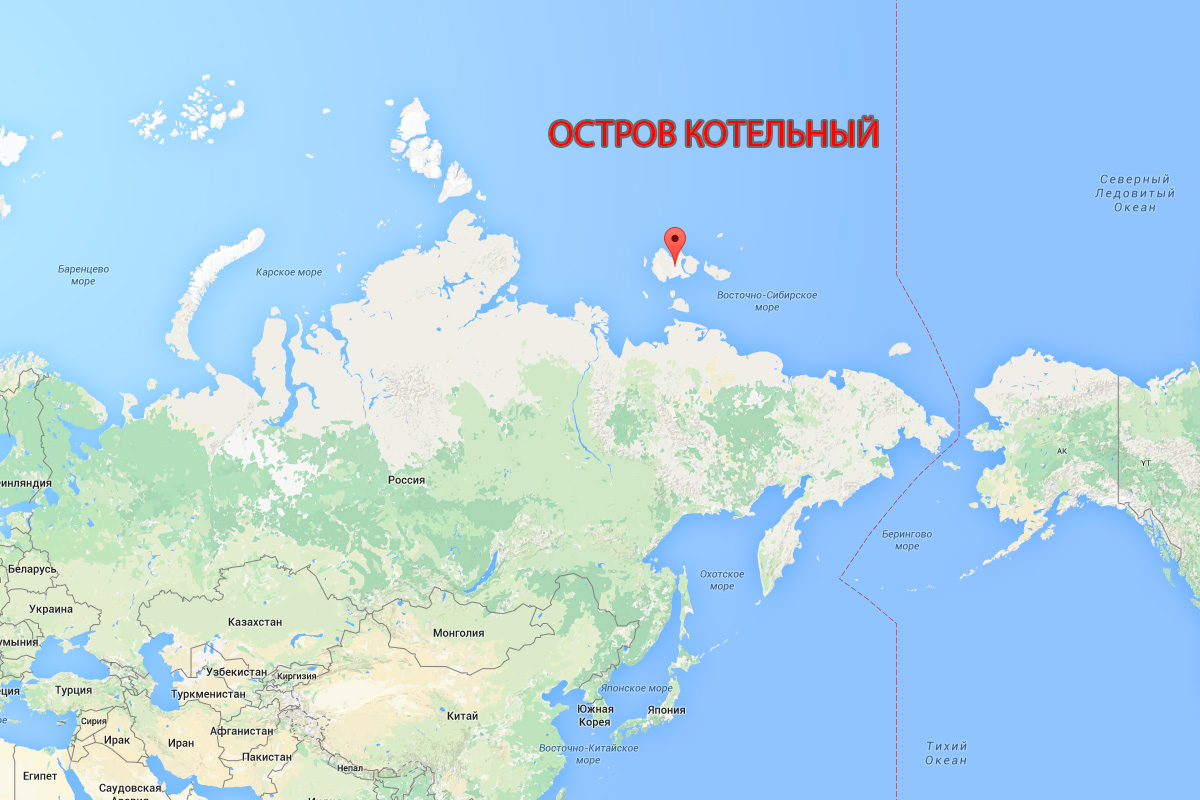 A source
A source
Getting from Moscow to the boiler room is extremely simple. Almost 7 hours fly to Yakutsk on a scheduled plane. Then it is necessary to fly to Tiksi - this is another three hours, and from there to the Boiler Room “within reach” - just three hours by helicopter over the sea with refueling on the island of Stolbova or a day or two.
A couple of times a year, the expedition sends canned food and fuel to the station. Under this case, and threw the locator with the materials.
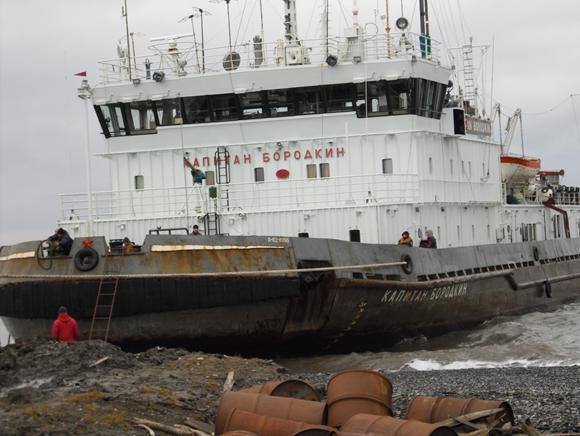
Equipment can be delivered by ship only in the short season of navigation.
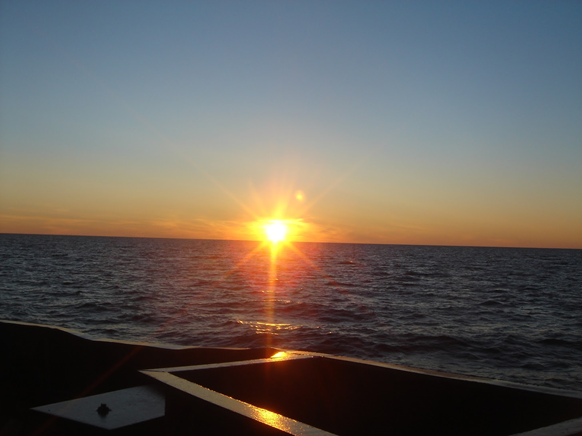 This is a boat, sea and sun.
This is a boat, sea and sun.
 Special men unload a radio transparent cover
Special men unload a radio transparent cover
 They unload the rest of the locator
They unload the rest of the locator

The climate on the island is arctic, severe. Snow lasts 9-10 months a year. The average July temperature is +2.9 C. The temperature below −30 degrees C can be observed from October to April.
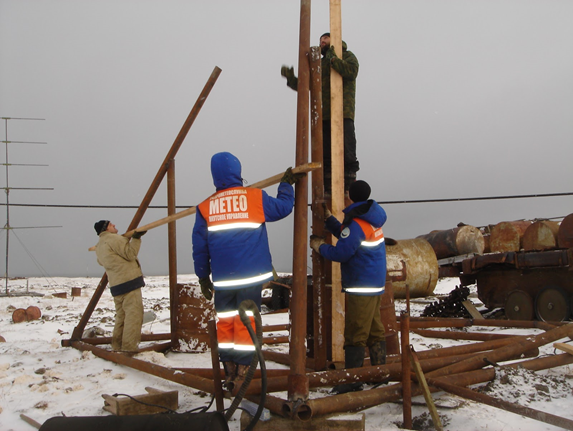 Installation of a tower for the installation of a new upper-air complex
Installation of a tower for the installation of a new upper-air complex
 Polar bears often visit
Polar bears often visit
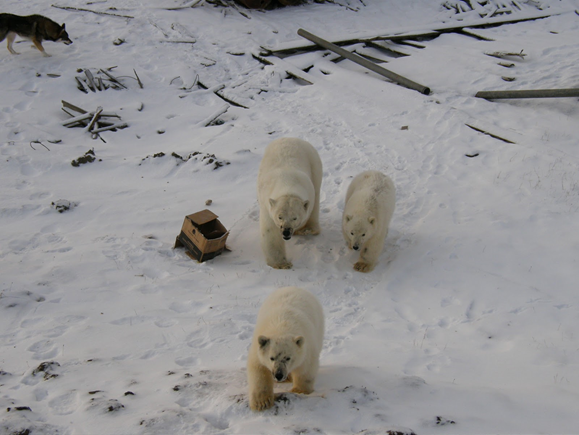 Commission from local colleagues
Commission from local colleagues
 Hello
Hello
Many ask if it was difficult to manage such a project. The answer is yes. If several such contracts fell on me at once, I would probably have creaked and still ran in a helmet and smiled.
But on the whole, I rather smoothly immersed myself in this story and, by analogy with children's writings, immersed my team there. Yes, and it was very interesting for me to do this: you can tell about this project to your grandchildren. This, in general, and warmed, for the most part.
As I already wrote, almost 10 years after the start of the first project, the second project of Rosgidromet modernization started. Where, in particular, we got hold of a contract about the continuation of meteorological network modernization. Below is a very fresh photo of a week ago - the installation of a new generation station.
 New weather station in the Central UGMS. Aircraft are no longer scary.
New weather station in the Central UGMS. Aircraft are no longer scary.
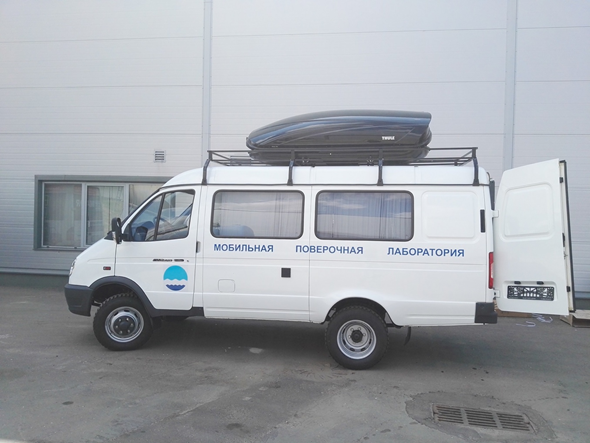 Spherical calibration laboratory in vacuum
Spherical calibration laboratory in vacuum
And finally - while working with Roshydromet, I willy-nilly became one of my own there. When you congratulate people on their professional holiday, you can often hear in response: "It is mutual, and you also." This is really cool =)
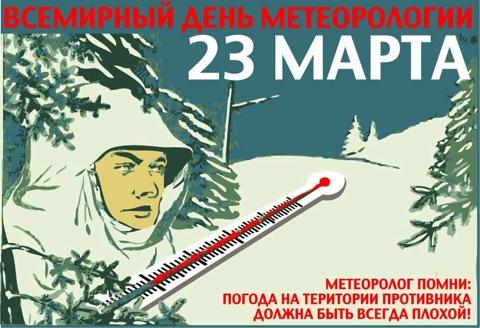
plots, I confess, this is absolutely incomprehensible, that's for sure ...
No, no, I don't understand at all.
N.V. Gogol
By the will of fate, I became a participant in the grandiose project LANIT - the modernization of the meteorological network of Roshydromet. Almost anywhere in the civilized world, observers do not rush around the site to take instrument readings — everything that is possible is automated. In Russia, they relied on this, but thanks to the Rosgidromet modernization project, the meteorological network re-equipment happened. There was no such scale anywhere and never, but we implemented the project in just two years (2008–2009). And this, for a minute, the delivery of 1842 meteorological stations plus other coherent and energy cladding. It was also necessary to assemble the stations, assemble and pack them, deliver them to each of the 85 regional centers, and from there take them to the stations, install and configure them.
At the moment, the second stage of modernization is in full swing. Excavations in the archives of documents and gave me the idea of such a post.
')


In general, the whole project of modernization of organizations and institutions of Roshydromet consisted of several contracts: on meteorology, hydrology, aerology, oceanology, etc. Then I will show photos that relate to the most remarkable of them.
The part of the project that we covered included the supply of equipment for more than 2,000 objects of the observation network and the installation of more than 500 sites.
1. Meteo-network
Equipment
To implement the project, LANIT became a manufacturer of weather stations. We decided that we would develop this production on our own on the basis of the Luch plant in Novosibirsk. Components were brought from all over the world, we also received Russian components (with them, by tradition, there were the most problems).

The factory organized a whole assembly line, which employed 10-15 people. For this, we several times brought crowds of specialists on the organization of production from the company Vaisala, who shared their knowledge, not knowing fear and reproach.
Then the station passed through the packing shop. Also “Luch” made metal products - masts, boxes, racks, traverses, etc. They also assembled the stations, tested and packed them.

The plant took off a serious part of our concerns. If we did everything ourselves, we would still implement this project. We should also thank these wonderful people for getting rid of problems with the equipment and packaging equipment. There was almost no mistake. But then we heartily swallowed up with another warehouse in subsequent projects, for example, the task of sending equipment to a specific recipient with given serial numbers turned out to be practically unsolvable.

Typical behavior of warehouse staff
In order to meet the budget, the installation was entered into the project. We visited 23 territorial offices (UGMS) of Roshydromet. Local experts from the departments were gathered there, technical technicians were taught how to install and maintain the stations, and methodologists were told how to work with the new equipment and software. The practice was fixed just chief-montage. Further, these trained engineers of the departments independently installed the complexes and trained observers at the meteorological stations.
We had up to 12 brigades under the installation supervision, each with 2 people.

Forget about grandma's methods
Previously, an observer who (and usually - who) receives several thousand rubles a month should go to the site 8 times a day in any weather, climb a ladder, get thermometers, record readings, etc. Now, at most Rosgidromet facilities, modern automated stations have replaced mercury barometers, hygrographs and other outdated meteorological tools.
Manual observations in the end have not gone away (a classic example is the definition of the shape of clouds), but at individual points not belonging to the main observation network, the stations are transferred to a fully automatic mode.

There is a favorite bike from Soviet times, which we were told in Hydromet. It describes well the relevance of our project.
Students studied at some meteorological high school and conceived to go south. Previously, everything was easier - they called to one of the southern weather stations:
- We are students, we will arrive soon. We will live here.
- Yes, please come.
They come - no one, only one little boy of 10-11 years old walks.
Students ask:
- Boy, where is everyone?
- And they went to the next village for the wedding.
It takes a couple of days, but no parents. Go to the boy:
“Boy, where are your parents?”
- So they left for two weeks.
- Well, but this is a weather station, every day you need to be on duty, in time to record everything and transmit.
- Oh, nothing. They all wrote two weeks in advance.

The most unique thing in our weather station is the software component. I'm talking about scripts, or configuration. Logger QML201 is very sophisticated. So we did all sorts of unimaginable things that hardly anyone has since repeated. Example: There is a key code for the transmission of meteorological information. It's about KN-01 , which was invented in shaggy years and was confined exclusively to the telegraph. The main data processing lay on the observer, and in our case it was necessary to considerably load the logger, instead of sending the primary data to the center and processing it already there.
Despite our violent protests, we had to implement this miracle in the logger. Yes, and with the distribution of data from the observer. Less than 8 years, how we managed to change something .
In addition to the weather stations, the project continued with 18 actinometric stations that measure all types of solar radiation.

And sea surface stations:



This sign, by the way, saved us all a lot of money. A couple of months after the installation, the buoy tore off the anchor with a storm. He went, I suppose, to Istanbul, but was intercepted by valiant border guards and delivered to the owners.
And underwater:



Into the great wide open
Karachay-Cherkessia
Of course, the project manager cannot reach all the stations - there is simply no time for this. But once I waved my hands on everything and went to Karachay-Cherkessia myself, to the Klukhorsky Pass. It is next to Dombai. This area has the status of inaccessible territory. By definition, roughly, a “hard-to-reach station” is where you can’t get by car, don’t ride a horse. And it is quite possible to get to Klukhor pass and live the life of the locals. The only thing that is not there is communication.

Village Klukhor


Klukhor pass - the highest mountain section of the Military-Sukhum road (height of 2781 m), leading from the great Caucasus mountains to the Black Sea coast. Here is the border of Russia with Abkhazia. It was in this place during the Second World War that the fiercest battles with the German occupiers for the Klukhor Pass took place.




After Klukhor decided to stay at the installation of an automatic station at the Zelenchukskaya Observatory.

Or rather, in the special astrophysical observatory of the Research Institute of the Russian Academy of Sciences in the North Caucasus.

Currently, it is the largest Russian astronomical center for ground-based observations of the universe. In the photo - the optical reflector BTA and me. Try not to confuse.

And then, as in the joke about Pinocchio and a broken leg, it went and went ...
2. Modernization of the upper-air network
This contract included the supply and installation of 60 upper-air locators throughout the country. Below - about one of the locations.
Yakutia, Island Boiler
Our project has touched places where you really can’t reach anything except a helicopter.
So, the LANIT team went to the Boiler Island in Yakutia. It is located between the East Siberian Sea and the Laptev Sea and is the largest in the archipelago of the Novosibirsk Islands.

Getting from Moscow to the boiler room is extremely simple. Almost 7 hours fly to Yakutsk on a scheduled plane. Then it is necessary to fly to Tiksi - this is another three hours, and from there to the Boiler Room “within reach” - just three hours by helicopter over the sea with refueling on the island of Stolbova or a day or two.
A couple of times a year, the expedition sends canned food and fuel to the station. Under this case, and threw the locator with the materials.

Equipment can be delivered by ship only in the short season of navigation.




The climate on the island is arctic, severe. Snow lasts 9-10 months a year. The average July temperature is +2.9 C. The temperature below −30 degrees C can be observed from October to April.




Many ask if it was difficult to manage such a project. The answer is yes. If several such contracts fell on me at once, I would probably have creaked and still ran in a helmet and smiled.
But on the whole, I rather smoothly immersed myself in this story and, by analogy with children's writings, immersed my team there. Yes, and it was very interesting for me to do this: you can tell about this project to your grandchildren. This, in general, and warmed, for the most part.
3. Meteo-2
As I already wrote, almost 10 years after the start of the first project, the second project of Rosgidromet modernization started. Where, in particular, we got hold of a contract about the continuation of meteorological network modernization. Below is a very fresh photo of a week ago - the installation of a new generation station.


And finally - while working with Roshydromet, I willy-nilly became one of my own there. When you congratulate people on their professional holiday, you can often hear in response: "It is mutual, and you also." This is really cool =)

Source: https://habr.com/ru/post/332888/
All Articles